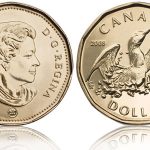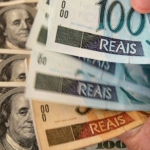On Tuesday (in GMT terms) gold for delivery in December traded within the range of $1,315.2-$1,321.1. Futures closed at $1,318.2, inching up a mere 0.03% compared to Monday’s close. It has been the 161st gain in the past 341 trading days and also a second consecutive one. The precious metal has increased its advance to 0.52% so far during the current month, after losing 3.40% in August.
On the Comex division of the New York Mercantile Exchange, gold futures for delivery in December were edging up 0.42% on Wednesday to trade at $1,323.7 per troy ounce. The precious metal went up as high as $1,326.1 during early European trade, while the current daily low was at $1,310.9 per troy ounce, recorded during the late phase of the Asian trading session.
The US Dollar Index, a gauge reflecting the relative strength of the greenback against a basket of 6 other major currencies, was inching down 0.02% on the day at a level of 95.95, after going up as high as 96.29 earlier. The latter has been the highest level for this index since August 9th (96.47). The gauge has pared its drop to 0.07% so far in September, following a 0.54% advance in August.
Gold futures rose sharply to highs unseen since September 15th in early European session, after Bank of Japan announced it would modify policy framework. The central bank kept its key interest rate intact at -0.1% at the conclusion of its two-day policy meeting, but announced that it would abandon its base money target and introduce yield curve control in order to speed up its struggle against deflation. BoJs new tools to facilitate yield curve control include the outright purchase of Japanese Government Bonds with yields designated by the Bank, which will be applicable for fixed-rate purchase operations, and fixed-rate funds-supplying operations for a period of up to 10 years. The pace of BoJs asset purchasing scheme was left intact at about JPY 80 trillion annually. The central bank is to purchase exchange-traded funds (ETFs) and Japan real estate investment trust (J-REITs), in order to increase their amount outstanding at an annual pace of JPY 6 trillion and JPY 90 billion, respectively. BoJ will also maintain the amount outstanding for CPs at JPY 2.2 trillion and for corporate bonds at JPY 3.2 trillion.
Market players are now expecting the outcome from the Federal Reserves two-day policy meeting. The Federal Open Market Committee (FOMC) is expected to keep the target range for the federal funds rate intact between 0.25% and 0.50% for a sixth consecutive meeting. In July, policy makers noted that US labor market conditions improved, while near-term growth risks diminished, thus, suggesting a hike this year was still a possibility. The Minutes from the Banks July 26th-27th meeting revealed that officials decided to leave policy options open, while maintaining the flexibility of adjusting interest rates in accordance with incoming macroeconomic data. The FOMC will announce its official decision on policy at 18:00 GMT, which will be followed by a press conference with Fed Chair, Janet Yellen, at 18:30 GMT. Yellen’s remarks will be closely examined for hints regarding the Bank’s future policy stance.
According to CME’s FedWatch Tool, as of September 20th, market players saw a 15.0% chance of a rate hike occurring at the Federal Reserve’s policy meeting in September, up from 12.0% in the prior business day, and a 22.0% chance of a hike in November, up from 19.3% in the preceding business day. As far as the December meeting is concerned, the probability of such a move was seen at 59.3% on September 20th, up from 53.9% in the prior business day.
Meanwhile, silver futures for delivery in December were advancing 1.22% on the day to trade at $19.513 per troy ounce, after going up as high as $19.560 a troy ounce during the early phase of the European trading session. The latter has been the highest price level for the commodity since September 9th.
Daily, Weekly and Monthly Pivot Levels
By employing the Camarilla calculation method, the daily levels of importance for gold are presented as follows:
R1 – $1,318.7
R2 – $1,319.3
R3 (Range Resistance – Sell) – $1,319.8
R4 (Long Breakout) – $1,321.4
R5 (Breakout Target 1) – $1,323.3
R6 (Breakout Target 2) – $1,324.1
S1 – $1,317.7
S2 – $1,317.1
S3 (Range Support – Buy) – $1,316.6
S4 (Short Breakout) – $1,315.0
S5 (Breakout Target 1) – $1,313.1
S6 (Breakout Target 2) – $1,312.3
By using the traditional method of calculation, the weekly levels of importance for gold are presented as follows:
Central Pivot Point – $1,318.4
R1 – $1,327.7
R2 – $1,345.1
R3 – $1,354.4
R4 – $1,363.6
S1 – $1,301.0
S2 – $1,291.7
S3 – $1,274.3
S4 – $1,256.8
In monthly terms, for the yellow metal we have the following pivots:
Central Pivot Point – $1,330.8
R1 – $1,354.8
R2 – $1,398.1
R3 – $1,422.1
R4 – $1,446.0
S1 – $1,287.5
S2 – $1,263.5
S3 – $1,220.2
S4 – $1,176.8





